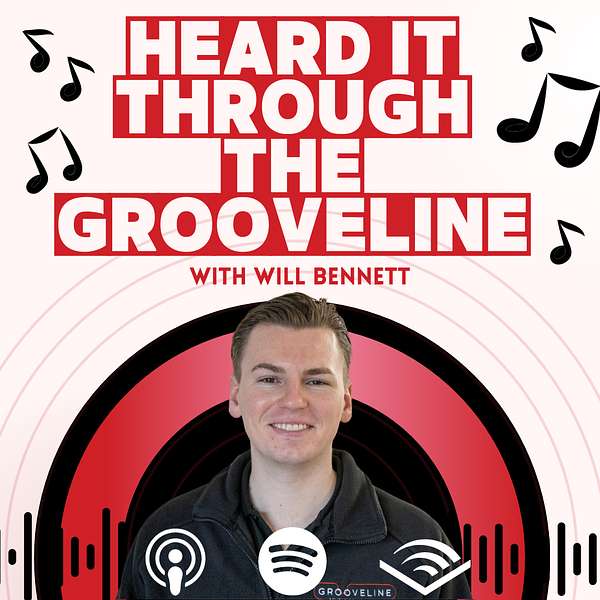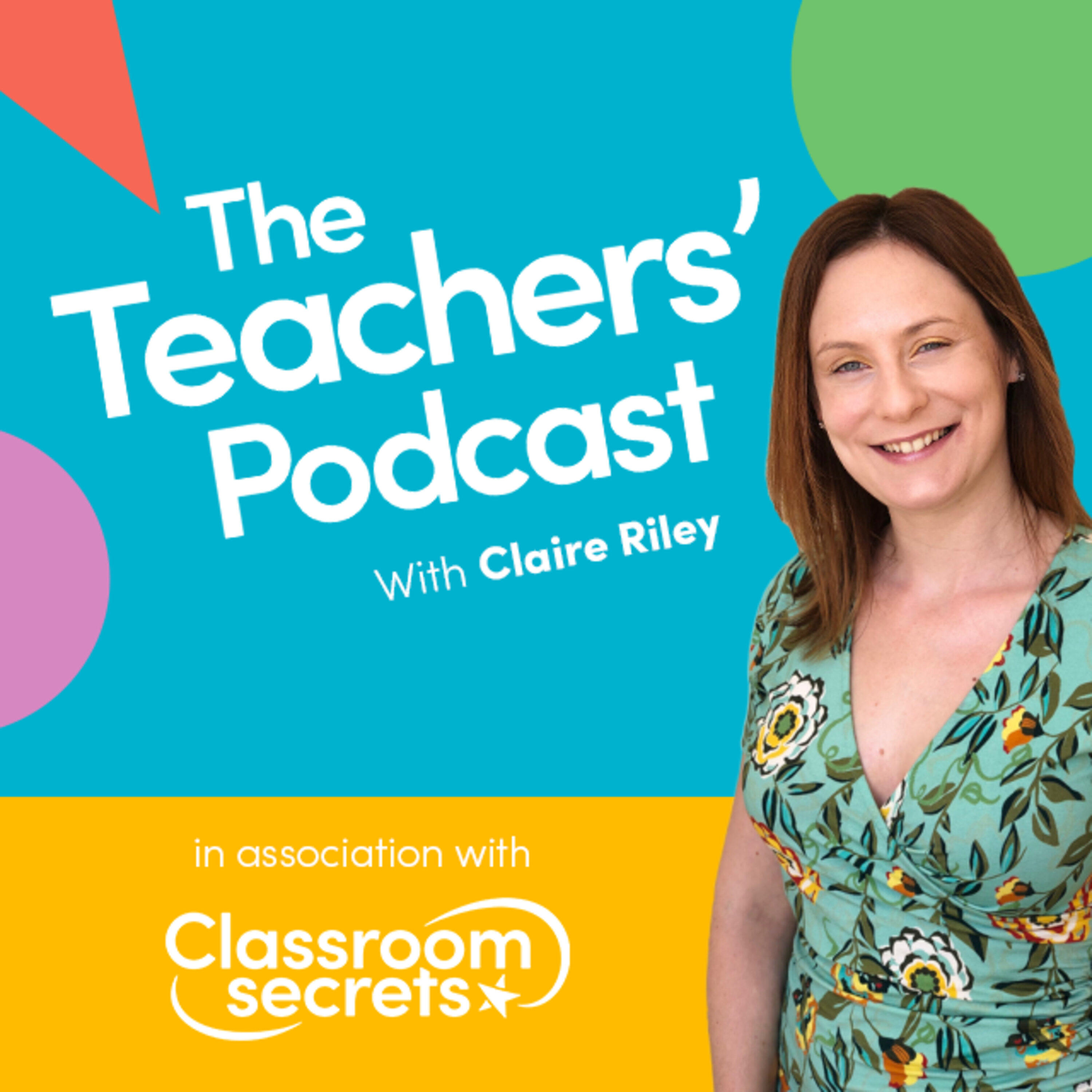
Heard It Through The Grooveline
Join Will, founder of Grooveline Music Education as he explores the subject of music education and most importantly - how parents can support their child's music education, even if they are not musical themselves!
Expect top tips, actionable advice, interviews with experts, sharing of personal experience and maybe some humour along the way!
Heard It Through The Grooveline
BONUS EPISODE: A Quick Guide To Reading TAB For Fretted Stringed Instruments
A midweek bonus episode... a really quick guide to reading TAB (short for tablature) for fretted, stringed instruments such as the guitar, bass, ukulele, mandolin, banjo etc!
www.groovelinemusiceducation.com
@groovelinemusiceducation on social media!
Looking for your next move as a music educator? Perhaps you want to start a new chapter in your career, build a new lifestyle after years on the road, or you're looking for the opportunity to create your own business but don't know where to start?
We are now recruiting pilot franchisees! Not your average owner/operator children's activity franchise - we are looking for business-minded investors to build a team, create a valuable asset for their future and help make a difference to the state of primary music education un the UK.
Grooveline Music Education is on a mission to reimagine and revolutionise primary music education.
We believe that engaging with music education at an early age is a crucial part of a child’s development. It provides an extraordinary range of cognitive, emotional, and social benefits that help children to thrive in all areas of their lives.
To do this, we are on a journey to bring Grooveline Music Education to schools around the UK. In order to meet our ambitious goal we are looking for passionate, like minded individuals who want to lead the music education revolution with us.
Sound like something you want to be part of?
Click below to find our more, download a prospectus or book a chat!
www.groovelinemusiceducation.com/franchise
Hello and welcome to another episode of Heard It Through The Grooveline. My name is Will Bennett and I'm the founder of Grooveline Music Education. I'm here to help you know how to best support the musical education of your child, even if you are not musical yourself.
Hi, everyone. Welcome to bonus episode. Normally we do one episode each Monday. But this is just really a very, very quick episode and it's not for everyone. So, let me straight away tell you, tell you who it is for. This is for people who have children that are learning a fretted stringed instruments.
So most likely that's going to be the guitar or the ukulele bass guitar mandolin, those kinds of instruments. And what we're going to talk to talk about today. Is how to read tab, which is short for tablature. A couple of episodes of go. I talked a lot about music theory. And I explained in a lot of detail, particularly the treble clef. And how you can kind of understand that. At least to a level enough to help your child with their music practice at home. But I did say I'll do a quick, separate episode related to the guitar.
So that's what today's for.
So let's take the electric guitar or I guess acoustic guitars, the same in terms of tab. We will have six strings on that guitar. If it's you clearly, you've got four mandolin has eight. But you kind of play two at a time, so they kind of doubled up. Basically teller has four. But let's just take a guitar.
It's got six strings and therefore we're going to have six lines going horizontally across the page. If it was ukulele with four strings, it'd be four lines, bass guitar, four lines, et cetera.
It is on these lines that we write. What we need to play basically. So. Whichever line is at the bottom. That is going to be the string. Which is actually at the top of the instrument. It's a bit confusing. The way I think about it on the guitar is if it's the thickest string. Even though that's the one closest to the ceiling.
It's actually the lowest string in terms of pitch. And therefore it's the lowest string written on the page. So if you take a guitar, the six strings from thickest, AKA lowest. To thinnest, AKA highest you go. E a D G B E. So written on the page. The line at the bottom would be E the next lineup would be a then D G B E, et cetera. Oftentimes when you're writing a tab. It tells you next to each line, what the string is anyway. And all we have to do is simply write the numbers off the front. On those lines.
So for example, if I want to play a song in the first night, I need to play. Is fret number three on the east string, then literally on the line, which relates to E there would be a number three. And it's as simple as that. It tells us really accurately. Exactly. Which notes we need to play, but also where we need to play them. There are some instruments such as the guitar that you can play the same note in five or six different places. So if you'll read in standard notation, you're not getting all the information that you require.
Whereas if you have tab, you know, exactly which. C to play, for example, you know, which part of the fretboard to play on, and that's going to help you kind of ensure that whatever melody is that you're playing. It's going to kind of fit nicely within, , a reachable distance of your hand.
Above the tab.
Sometimes there would also be standard notation, so you can have the sanitation and the tab. And you can refer to both. My advice would be to look at the standard notation, just for the rhythms. Then look at the tab to tell you exactly which notes to play and how to play them.
Sometimes it will even tell you. Which fingers to play with as well. So that's, that's really helpful.
Again, it's one of those things. That's probably easier when you can see it. So I have a blog on our website. If you go to groove line music, education.com forward slash blog. There's one about four or five blogs ago. Which is all about fretted stringed instruments and how to read tab. Some people think tab is kind of like a, you know, they're a bit snooty about it and they think, oh, you should read standard music.
Not just relying on tab. And to an extent, the. There's some merit in that particularly reading rhythms, but actually the idea that Tabby somehow worse than notation is not accurate. Taboo actually predates notation. Anyway, it goes all the way back to like medieval lute music. But also it's just more accurate and it is what you do on the guitar or the base of the ukulele.
It is industry standard, you know and it does provide you with more information. Obviously ideally, and eventually you want to be able to read both types so that whichever music you're presented with. You're able to play it, but you know, for now, As a parent who has a child learning a stringed fretted instrument, all you really need to know. It's the basics about rhythms, which we talked about a couple of episodes ago. And now just the basics about how tap works. So if you see the lines on a page and it says 3, 6, 6, 5, You know, They need to play the frets 3, 6, 6, 5. On whichever string. It is written on. So as again, as I said, the lowest string would be. E. And so you need, if it's written on that line, you play 3, 6, 6, 5.
If the six is actually on the next line up, then it's play three on the east string. And then six, six is on the eighth string. Five is on the east string, et cetera. So yeah, hopefully that's just a really quick, easy guide for you guys. Just like a bonus midweek episode. Check out the blog for some kind of visual representations of what I'm talking about. And also of course, if your child is learning the guitar. They will have some music and you can look at it as well and kind of relate what I've said to something visual. Hope that's helpful.
If you have any questions, please get in touch with us and I'll see you back on Monday, back to our normal schedule. Of weekly episodes. Thank you guys.
Thank you for listening to another episode of Heard It Through The Groove Line, the podcast that helps parents like you best support your children's musical education, even if you are not musical yourself. To find out more, you can follow us on social media, and don't forget to hit like and subscribe.

